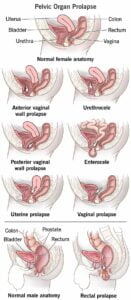Diagnosing and Treating Mold Allergies
Diagnosis To diagnose a mold allergy, your physician will review your symptoms and may perform a physical exam to rule out other health issues. The following tests are commonly used:
- Skin Prick Test: This involves applying diluted allergens, like local molds, to your skin using small punctures. A hive at the test site indicates an allergy.
- Blood Test: Also known as the radioallergosorbent test, this measures your immune response to mold by checking for immunoglobulin E (IgE) antibodies in your blood.
Treatment Avoiding mold is the best strategy, but since it’s widespread, complete avoidance is often not possible.
Treatments for mold allergy symptoms include:
Nasal Corticosteroids: These sprays address inflammation and are typically the first line of treatment.
Common options include:
- Ciclesonide (Omnaris, Zetonna)
- Fluticasone (Flonase Allergy Relief, Xhance)
- Mometasone (Nasonex)
- Triamcinolone
- Budesonide (Rhinocort)
Side effects may include nosebleeds and dryness.
Antihistamines: These alleviate itching, sneezing, and runny nose by blocking histamine.
OTC antihistamines:
- Loratadine (Alavert, Claritin)
- Fexofenadine (Allegra Allergy)
- Cetirizine (Zyrtec Allergy)
Prescription nasal sprays:
- Azelastine (Astelin, Astepro)
- Olopatadine (Patanase)
Oral Decongestants: These can increase blood pressure and may cause insomnia, appetite loss, palpitations, anxiety, and restlessness.
Decongestant Nasal Sprays: Use these short-term to avoid rebound congestion. Possible side effects include headaches and nervousness.
Montelukast (Singulair): This medication blocks leukotrienes but has potential side effects like anxiety and depression, leading to FDA warnings.
Inhaled corticosteroids are generally more effective than montelukast and are preferred unless nasal sprays are not tolerated or mild asthma is also present.
Interim Measures for Managing Mold Allergies
While awaiting your doctor’s appointment, you can take the following steps to manage your symptoms:
Over-the-Counter Medications: There are various allergy medications available without a prescription that may help alleviate your symptoms.
Mold Removal: If mold is present in your home, it’s best to have someone who isn’t allergic to mold clean the area. They should use a mixture of 1 cup (250 ml) of bleach per 1 gallon (3.8 liters) of water, or a mold-cleaning product designed for this purpose. If you must clean the mold yourself, wear protective gear such as long rubber gloves, safety goggles, and a mask to minimize mold exposure.


